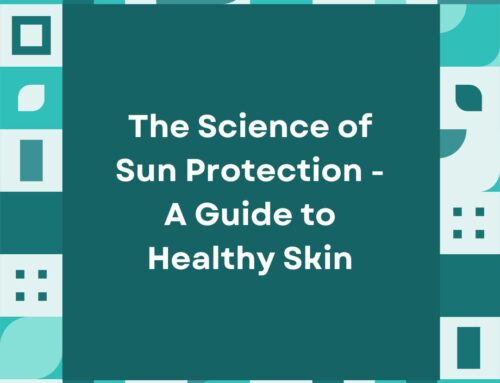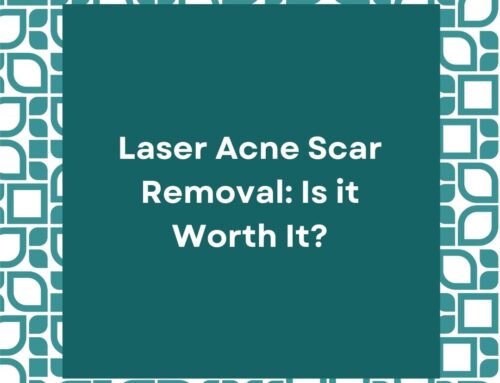Chemical peels come in all varieties. They can be broadly categorized based on their depth of penetration: superficial, medium, and deep. While many sources on the internet commonly tout chemical peels as “one of the most effective treatments” for atrophic scarring, the true answer is…it really depends.
Superficial Chemical peels
Superficial chemical peels affect the epidermal layers of skin. Flat, pigmented scars can benefit greatly from these mild peeling agents because the scar is located in the epidermis, the same layer of the skin that produces melanin (or excessive melanin, in this case). The most commonly used chemical peels are alpha-hydroxy acids (AHAs) and beta-hydroxy acids (BHAs). Some examples include glycolic acid, lactic acid, citric acid, and salicylic acid.
These compounds accelerate turnover of the outer pigmented layers of skin and inhibit melanin production, contributing to a lighter skin complexion in the treated areas. Chemoexfoliation also helps tighten the skin and remove textural irregularities.
Tretinoin is also another popular formula prescribed for scar treatment. Like AHAs and BHAs, tretinoin accelerates exfoliation and minimizes hyperpigmentation. Tretinoin and other retinoid alternatives are often used in conjunction with hydroquinone, which decreases the number of melanocytes in the skin. This combination leads to a synergistic lightening effect on the scar, improving its overall appearance.
It is important to note that superficial chemical peels can be used for atrophic or raised scars. However, its ability to correct the physical shape of the scar is very limited but can still provide some level of correction in terms of texture and color.
Medium-Depth and Deep Chemical Peels
Deeper or more severely hyperpigmented scars, however, would derive minimal benefit from these superficial acids. This is because the acids’ induced depth of injury only reaches the epidermis, which is insufficient in treating collagen loss deep in the dermal layers.
Chemicals, such as TCA (<50%) or Jessner’s peel, were developed to provide more substantial results for these more severe skin conditions. Because these acids can penetrate deeper into the dermis, the skin tightening effects are much more pronounced to the human eye.
Serial chemoexfoliation with medium-depth peeling agents leads to favorable cosmetic outcomes for mild to moderate scarring. However, when it comes to severe cases of scarring, for instance deep ice-pick scars where the dermis is completely destroyed, deep chemical peels are required.
Deep chemical peels have had a long history in the field of aesthetic medicine. Phenol-croton oil peels and >50% trichloroacetic acid (TCA) have regularly been used for full-face chemoablation for patients with severely aged skin. In the next few weeks, the patient’s entire face sheds skin like a lizard, revealing fresh baby skin underneath.
The before-and-afters do not tell the whole story, however. Many patients complain of the long-downtime, which is riddled with pain, itching, and frequent burning sensations. Also, let’s not forget that these peels are usually only indicated for patients with fairer skin complexions – in other words, people who have a low risk of post treatment hyperpigmentation.
CROSS Technique
New, safer techniques have been developed to expand the clinical application of these peels for patients with darker complexions. CROSS, which stands for chemical reconstruction of skin scarring, was invented in the early 2000s as a focal technique for applying deep chemical peels to atrophic scar tissue alone.
This technique spares the surrounding healthy skin and limits the volume of chemical agents required to correct the skin defects. This lowers the risk of large areas of hyperpigmentation and overall systemic toxicity to the patient.
Whether it comes to full-face application or focal application, patients must tread with caution when it comes to deep chemical peels. The depth of injury reaches the deep dermis, which may surpass the depth of the scar itself, leading to even worse cosmetic results. It is best to ask your physician to “test” these chemicals on only a couple of scars before proceeding to apply them all over your scars.

Which is better: TCA CROSS or Phenol CROSS?
High-strength TCA is the most popular compound used with the CROSS technique. Numerous research studies have shown amazing results for acne scarring, especially for ice pick scar. This is not surprising, given that TCA can reach the same depths as ice pick scars.
More recently, however, numerous researchers have shown that TCA can lead to widening of scars. Whether this is due to application technique (applying the peel to the “shoulders” of the scar) or due to the chemical itself is up for debate.
In the meantime, phenol has shown great promise as a medium for CROSS. A split-face study conducted by Dalpizzol et al showed superior results for scars treated with phenol compared to scars treated with TCA. Additionally, there were less adverse effects, such as hyperpigmentation and worsening of scars.
What is interesting is that the depth of phenol penetration can be adjusted with the addition of croton oil, a lipid-soluble carrier that facilitates passage through the dermis. Higher concentrations of croton oil is correlated with greater penetration depth and thus can be used to modulate the efficacy of phenol for a wide range of scar severity.
Currently, there is a lack of studies confirming the efficacy of phenol-croton oil CROSS for atrophic scarring, particularly acne scarring. Because it is considered a highly caustic chemical, it is especially important to have a professional conduct the treatment.
Last words…
All in all, the consensus that chemical peeling is one of the most effective treatments for scarring still stands. It also happens to be the most cost-effective alternatives to harsh treatments, such as lasers and radiofrequency. When it comes to determining whether you are a good candidate for chemical treatment, it is important to get a professional opinion.
Stay tuned for more information on various treatment options for scarring available at Scar Healing Institute!
Schedule an Appointment
Scar Healing Institute
Scar Healing Institute is committed to developing the most effective treatments for scarring. Our team of scar revision specialists are continually inventing the latest technologies and formulas to deliver the best results for our patients.





Yay google is my world beater aided me to find this outstanding site!
Escape rooms hub
You have remarked very interesting points! ps decent site..
This design is spectacular! You obviously know how to keep a
reader entertained. Between your wit and your videos, I wwas almost
moved to start my own blog (well, almost…HaHa!) Excellent job.
I really enjoyed whnat you had to say, and more than that,
hhow youu presented it. Too cool! https://Odessaforum.Biz.ua/